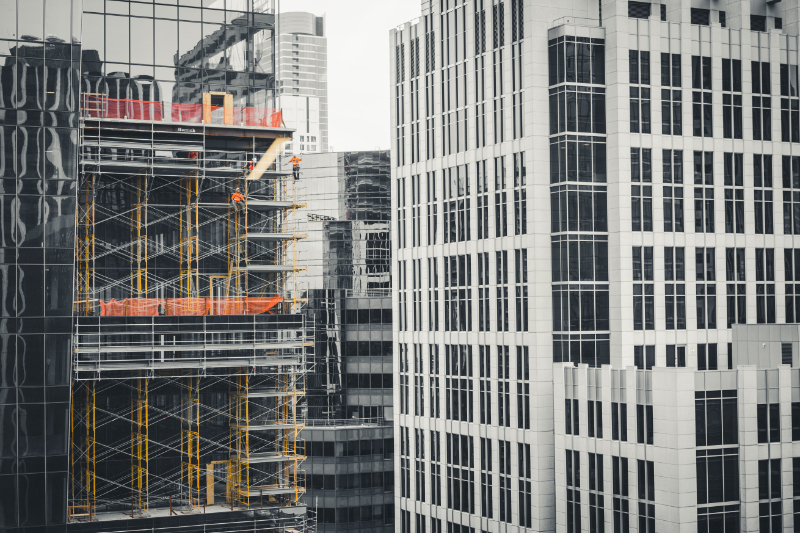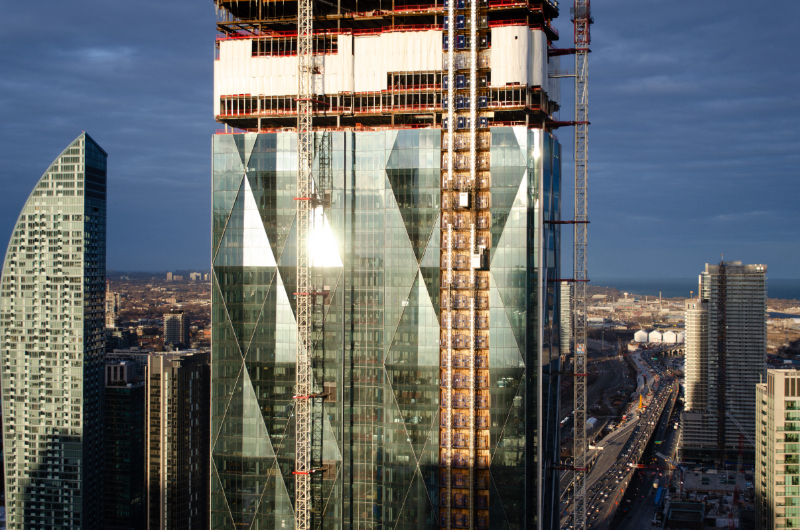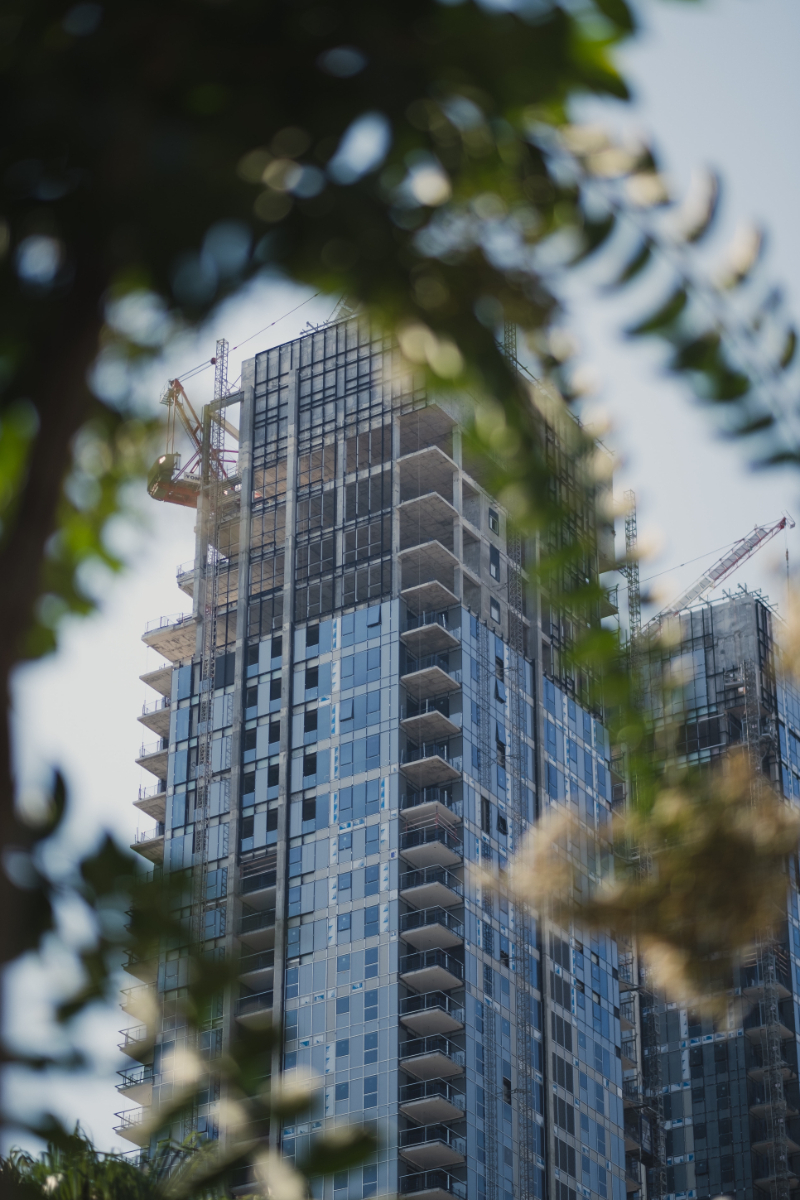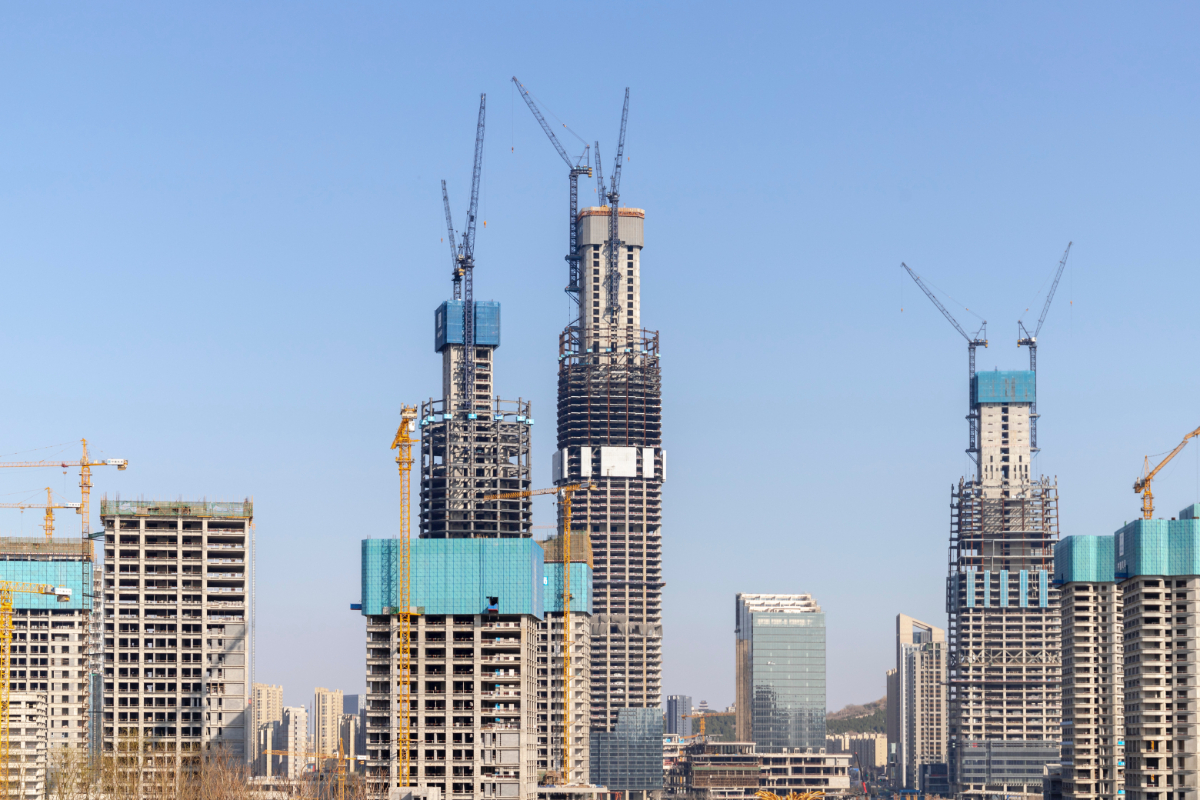This page looks at when a working at height permit is required? If you are working on a roof or other construction project at height, you will need to be aware of the edge protection requirements and working at height regulations.
When is a working at height permit required?
When is a working at height permit required? This can depend on several factors, such as the specific site you are working on or the contractor you are working with.
The permits to work are described as a “safe system of work” and were introduced by some sites in order to ensure that all hazardous work which is done onsite is controlled and safe.
What is considered to be "hazardous work" can vary from site to site. Some sites may need workers to have a permit to work in order to clean windows on a second floor, whereas other sites may not see this as hazardous, so the permit will not be needed.
How high is working at height?
Work at height is defined as any work where if there were zero precautions at all, a person would be able to fall a distance and be likely to cause some form of personal injury.
This means that there is no specific measurement or height in place in order to classify working at height.
Insurance companies will usually cover work from between 0 to 3 metres, and some specific policies will cover between 3 to 5 metres. You will need a bespoke policy to find one that will cover higher ranges.
This is where the misconception began that working at height is only when you are working above a height of 3 metres, or there is a risk of falling from 3 metres.


What are the risks of working at height?
You may wonder, what are the risks of working at height? Are they truly that high?
In the years 2018/19, there were 40 fatal injuries to workers that were from falling from a height. This accounts for 27% of all fatal worker injuries.
This compares to 35 in the years 2017/18, and an annual average over the period 2014/15-2018/19 of 36.
Falls from heights account for around 43,000 cases of self-reported non-fatal injuries. If someone is injured by falling from a height, they will, on average, be off work for 9.4 days.
Who is responsible for Working at Height?
The Work at Height Regulations 2005 was introduced as a way to prevent the injuries and deaths caused by falls from height when working. Minimising risks for workers was the main concern of the regulations.
Employers, building owners, facilities managers, and anyone else who controls employees working at height, including the self-employed, can be held responsible for a falling from height accident. If the equipment was found to be unsafe, faulty, or uncertified, then they would be liable.
The organisations and individuals who have responsibility for working from height worksites have a legal responsibility to ensure that the Work at Height Regulations 2005 is implemented and that all working from height workers activity is fully planned out as well as supervised and carried out.
HOW DOES A FALL ARREST SYSTEM WORK?
They are also responsible for making sure that all the fall protection systems for Work at Height employees are regularly inspected at a maximum of 12-month intervals. The inspections will take place more often when working in hazardous environments.
The employer (or the organisation that controls working at height, such as a facilities management business) is required to take responsibility for specific duties under the Work at Height Regulations 2005.
The regulations detail that the workers must always have appropriate Work at Height equipment available to them, this includes Personal Protective Equipment (PPE). All workers should also receive the appropriate training in how to use the equipment they have been given. Whilst the workers are training with their equipment, they should be fully supervised.
Regulation 12 of The Work at Height Regulations deals with all the specifics of inspecting the fall protection equipment and systems. It is here that the regulations detail that the responsibility to ensure that all Work at Height equipment is fully tested and inspected regularly lies with the employer.
One example of this would be a handrail or a guardrail. Under Provision and Use of Work Equipment Regulations 1998, also known as PUWER, these pieces of working at-height equipment would need to be inspected at least once every 12 months and more often if the environment is deemed hazardous.
The Work at Height Regulations also states that any surfaces, parapets, or permanent rails, where work is going to be carried out, should be checked each time before that equipment is used.
This would once again be the responsibility of the employer to ensure that all the inspecting is done fully and effectively. In this situation, the employer is the duty holder. The legislation within the Work at Height Regulations points to some specific danger areas where special considerations should be given as to safety and inspections.
One example of this would be a fragile surface where a worker could potentially break through the surface, or the surface could crumble and lead to the worker slipping.
In situations such as these, it is important for the employer, or the contractor responsible for the worksite, to ensure that a safe and suitable platform is given. They also need to ensure that all precautions have been taken and that the distance from the surfaces to the floor below has been minimised to reduce the impact of a fall.
Another responsibility of the employer is to ensure that all workers are aware that they will be working in a dangerous area when the time comes. Warning notices must be posted, so the worker knows exactly where the danger area begins and ends.
Responsibilities of Managers and Supervisors of Work at Height
- Managers and supervisors need to ensure that working at height is the last measure, and every effort is made to avoid this kind of work. In times when working from height cannot be avoided, sufficient health and safety risk assessments need to be carried out.
- They also need to provide appropriate work equipment, as well as other measures. This includes cover plates over holes in the ground and guardrails on the building perimeter. This is done to prevent falls when working at height is the last resort and cannot be avoided. They should also ensure that all equipment used is fully inspected.
- Ensure that before any working at height job begins, a method statement including emergency procedures and rescue procedures is developed.
- Ensure that all staff who work at height have the appropriate training, supervision, and instruction
- All contractors must not start any work until a risk assessment and method statement has taken place.
Safe steps for working at height
Working at height takes place across a huge range of industries, and there are many hazards which are specific to each environment.
A common cause of many accidents is the failure to take appropriate precautions. This especially is true when workers are carrying out work at relatively low heights.
This is due to workers failing to plan properly, and they can underestimate the risks involved with working at height. Common mistakes include not securing themselves in place, using inappropriate equipment, or working in areas where the ground is not secure.
A business' safety culture can have a large impact on the way that workers behave when they are working at height and, therefore, the chance of an accident occurring. Many companies are fully compliance-based.
This means that they will give their employees all the correct PPE and occasionally basic training but will end their efforts once their basic legal requirements end.
Employees will then be expected to know how all the equipment works and if an accident occurs, it will be the employee's fault.
Regulatory compliance is very obviously not enough to make sure that workers are kept safe while working from heights and is not enough to ensure that serious accidents are avoided. Businesses will stronger safety cultures can massively improve their safety practices.
Training and supervision are taken far more seriously, and management will routinely inspect not only the equipment being used by employees but also the practices carried out by workers.
This encourages workers to give feedback and will help the employees to operate in a safer manner.

Businesses that demonstrate that they genuinely care about their employee's safety and well-being will have a much higher staff retention rate, as well as a body of staff with a much more positive approach to safety. Working at height is always going to be risky work.
These risks need to be fully assessed, and the work itself needs to be carefully planned. This is true even when workers are working from a relatively low height.
If you are working on a construction project in Suffolk, Cambridgeshire, Hertfordshire, Kent or London, you will be considring the safety requirements of your workers. Follow the links below for construction site safety nets, crash bags hire and edge protection hire.
Construction Safety Nets Kent Fall Arrest Bags Kent Edge Protection Systems Kent
